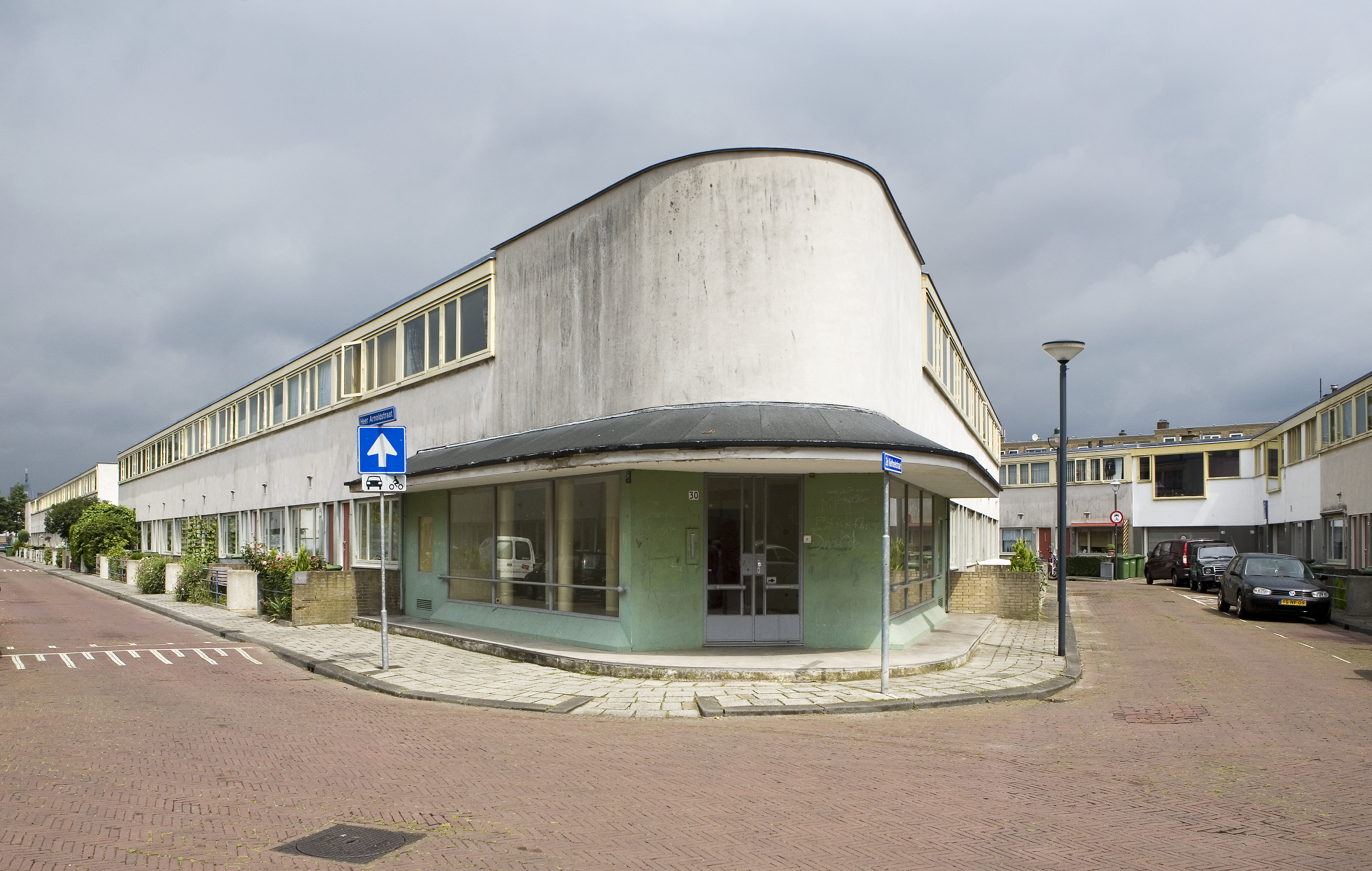|
Armando Bernabiti
Armando Bernabiti (Crevalcore, 4 March 1900 – Crevalcore, 4 March 1970) was an Italian architect. Life and career Born in Crevalcore, Bernabiti studied at the Academy of Fine Arts in Bologna and began working as an architect in Paris and Rome. He designed public and private buildings in a mostly Italian Rationalism, Rationalist style, though with strong influence from local vernacular architecture. Portolago In 1923, Bernabiti was invited by Benito Mussolini along with Rodolfo Petracco to design the city of Portolago in Leros. The city's planning and architecture was inspired by modernism, Futurism, and classical geometry. Described as "the only truly rationalist town outside of Italy", their work on Portolago has been praised for its beauty, imagination and inclusivist nature. Rhodes In 1927, he moved to the Dodecanese, which had been an Italian Islands of the Aegean, Italian possession since 1912. Much of his work in Rhodes to helped to solidify Italian dominance on th ... [...More Info...] [...Related Items...] OR: [Wikipedia] [Google] [Baidu] |
Crevalcore
Crevalcore (Bolognese dialect, Western Bolognese: ) is a town and ''comune'' in the Metropolitan City of Bologna, Emilia-Romagna, northern Italy, near Bologna. On January 7, 2005 Crevalcore train crash, a train crash in Crevalcore killed 17 people. On May 20, 2012 2012 Northern Italy earthquakes, an earthquake caused severe damage to several buildings in the city center. People *Marcello Malpighi (1628 - 1694), doctor *Antonio Leonelli (c. 1438–1441; after 1515 or 1525), painter *Gaetano Lodi (1830 – 1886), a famous artist and Ornament (art), ornamentation teacher *Armando Bernabiti (1900 - 1970), architect See also *Crevalcore train crash {{EmiliaRomagna-geo-stub ... [...More Info...] [...Related Items...] OR: [Wikipedia] [Google] [Baidu] |
Archaeological Museum Of Rhodes
The Archaeological Museum of Rhodes () is located in the Medieval City of Rhodes. The museum is housed in the monumental edifice that was the hospital of the Knights of Saint John. Construction was begun in 1440 and brought to completion in the time of the Grand Master d'Aubusson (1476-1503). The Museum contains various collections of archaeological artifacts from various parts of Rhodes and the neighbouring islands, including the Statue of the Crouching Aphrodite (1st century BC), which was inspired by a famous prototype work created by the sculptor Doidalsas in the 3rd century BC, and the Pyxis of the Fikellura type (mid-6th century BC). The museum also holds the Head of Helios, which was featured in 2011 on the album cover of ''Floral Shoppe'' by Macintosh Plus, and subsequently became famous for its association with the Vaporwave movement. Gallery File:Attic red figure pelike Rhodes.jpg, Attic red-figured pelike, from the tumb of an infant, featuring a man with a lyre ... [...More Info...] [...Related Items...] OR: [Wikipedia] [Google] [Baidu] |
1970 Deaths
Events January * January 1 – Unix time epoch reached at 00:00:00 UTC. * January 5 – The 7.1 1970 Tonghai earthquake, Tonghai earthquake shakes Tonghai County, Yunnan province, China, with a maximum Mercalli intensity scale, Mercalli intensity of X (''Extreme''). Between 10,000 and 14,621 are killed and 30,000 injured. * January 15 – After a 32-month fight for independence from Nigeria, Biafran forces under Philip Effiong formally surrender to General Yakubu Gowon, ending the Nigerian Civil War. February * February 1 – The Benavídez rail disaster near Buenos Aires, Argentina (a rear-end collision) kills 236. * February 10 – An avalanche at Val-d'Isère, France, kills 41 tourists. * February 11 – ''Ohsumi (satellite), Ohsumi'', Japan's first satellite, is launched on a Lambda-4 rocket. * February 22 – Guyana becomes a Republic within the Commonwealth of Nations. * February – Multi-business Conglomerate (company), conglomerate Virgin Group is founded as a ... [...More Info...] [...Related Items...] OR: [Wikipedia] [Google] [Baidu] |
1900 Births
As of March 1 ( O.S. February 17), when the Julian calendar acknowledged a leap day and the Gregorian calendar did not, the Julian calendar fell one day further behind, bringing the difference to 13 days until February 28 ( O.S. February 15), 2100. Summary Political and military The year 1900 was the end of the 19th century and the beginning of the 20th century. Two days into the new year, the U.S. Secretary of State John Hay announced the Open Door Policy regarding China, advocating for equal access for all nations to the Chinese market. The Galveston hurricane would become the deadliest natural disaster in United States history, killing between 6,000 and 12,000 people, mostly in and near Galveston, Texas, as well as leaving 10,000 people homeless, destroying 7,000 buildings of all kinds in Galveston. As of 2025, it remains the fourth deadliest Atlantic hurricane on record. An ongoing Boxer Rebellion in China escalates with multiple attacks by the Boxers on Chines ... [...More Info...] [...Related Items...] OR: [Wikipedia] [Google] [Baidu] |
Diagoras Stadium
The Municipal Stadium of Rhodes "Diagoras" (former national), with its original Italian name Arena Del Sole, is a football and cycling stadium in the city of Rhodes and is the seat of the General Assembly of Diagoras Rhodes and AS. Rhodes. It is well-lit, has a bike path and a covered roof at gates 1 and 2. It also has an auxiliary training center with natural turf and open basketball and volleyball courts. History The stadium was built in 1932 by the Italian authorities with architect Armando Bernabiti, based on an ancient Hellenic U-shaped stadium, with stands on three sides, and was then called Arena Del Sole (Sun Arena), there are reports that in 1936 with the change of commander of the then Italian Dodecanese, from Mario Lago to Cesare Maria De Vecchi, the stadium was renamed "Stadio Mussolini", but there are no valid sources. Towards the end of the Second World War, it was named "Diagoras" after the ancient boxer Diagoras of Rhodes by members of the General Assembly of the ... [...More Info...] [...Related Items...] OR: [Wikipedia] [Google] [Baidu] |
Modern Architecture
Modern architecture, also called modernist architecture, or the modern movement, is an architectural movement and style that was prominent in the 20th century, between the earlier Art Deco and later postmodern movements. Modern architecture was based upon new and innovative technologies of construction (particularly the use of glass, steel, and concrete); the principle functionalism (i.e. that form should follow function); an embrace of minimalism; and a rejection of ornament. According to Le Corbusier, the roots of the movement were to be found in the works of Eugène Viollet-le-Duc, while Mies van der Rohe was heavily inspired by Karl Friedrich Schinkel. The movement emerged in the first half of the 20th century and became dominant after World War II until the 1980s, when it was gradually replaced as the principal style for institutional and corporate buildings by postmodern architecture. Origins Modern architecture emerged at the end of the 19th century from ... [...More Info...] [...Related Items...] OR: [Wikipedia] [Google] [Baidu] |
Glass Brick
Glass brick, also known as glass block, is an architectural element made from glass. The appearance of glass blocks can vary in color, size, texture and form. Glass bricks provide visual obscuration while admitting light. The modern glass block was developed from pre-existing prism lighting principles in the early 1900s to provide natural light in manufacturing plants. Today glass blocks are used in walls, skylights, and sidewalk lights. Attributes Appearance The texture and color of glass blocks can vary in order to provide a range of transparency. Patterns can be pressed into either the inner void or the outside surface of the glass when it is cooling in order to provide differing effects. Glazes or inserts may also be added in order to create a desired private or decorative effect. Standards and grading Glass blocks in Europe are manufactured in accordance with the European Standard EN1052-2. The International Standard is ISO TC 160/SG1. The Standards allow for vari ... [...More Info...] [...Related Items...] OR: [Wikipedia] [Google] [Baidu] |
International Style
The International Style is a major architectural style and movement that began in western Europe in the 1920s and dominated modern architecture until the 1970s. It is defined by strict adherence to Functionalism (architecture), functional and Form follows function, utilitarian designs and construction methods, typically expressed through minimalism. The style is characterized by Modular building, modular and Rectilinear polygon, rectilinear forms, Plane (mathematics), flat surfaces devoid of ornamentation and decoration, open and airy interiors that blend with the exterior, and the use of glass, steel, and concrete. The International Style is sometimes called rationalist architecture and the modern movement, although the former is mostly used in English to refer specifically to either Rationalism (architecture), Italian rationalism or the style that developed in 1920s Europe more broadly. In continental Europe, this and related styles are variably called Functionalism (architectu ... [...More Info...] [...Related Items...] OR: [Wikipedia] [Google] [Baidu] |
Hellenic Centre For Marine Research
The Hellenic Centre for Marine Research (HCMR) (Greek language, Greek: Ελληνικό Κέντρο Θαλάσσιων Ερευνών, ΕΛ.ΚΕ.ΘΕ.) is a Greece, Greek governmental Research institute, research organisation, focusing on various fields of marine science. It is operating multiple facilities across Greece, which include Laboratories, scientific laboratories, Public aquarium, public aquaria and experimental tanks. It also owns three Research vessel, research vessels, a crewed submersible and several Remotely Operated Vehicle, Remotely Operated Vehicles for underwater exploration. Additionally, its activities encompass Marine conservation, conservation projects and educational programs for the public. History In 1912, the Greek government decided to create the first Greek marine research institute and consulted the director of the Ichthyological Station of Rome, professor Decio Vinciguerra. With his suggestions, the Marine Hydrobiological Station was established i ... [...More Info...] [...Related Items...] OR: [Wikipedia] [Google] [Baidu] |
Art Deco
Art Deco, short for the French (), is a style of visual arts, architecture, and product design that first Art Deco in Paris, appeared in Paris in the 1910s just before World War I and flourished in the United States and Europe during the 1920s to early 1930s, through styling and design of the exterior and interior of anything from large structures to small objects, including clothing, fashion, and jewelry. Art Deco has influenced buildings from skyscrapers to cinemas, bridges, ocean liners, trains, cars, trucks, buses, furniture, and everyday objects, including radios and vacuum cleaners. The name Art Deco came into use after the 1925 (International Exhibition of Modern Decorative and Industrial Arts) held in Paris. It has its origin in the bold geometric forms of the Vienna Secession and Cubism. From the outset, Art Deco was influenced by the bright colors of Fauvism and the Ballets Russes, and the exoticized styles of art from Chinese art, China, Japanese art, Japan, Indian ... [...More Info...] [...Related Items...] OR: [Wikipedia] [Google] [Baidu] |
Aquarium Of Rhodes
The Aquarium of Rhodes, also known as the Hydrobiological Station of Rhodes, is a research centre, aquarium and museum in Rhodes, Greece. It was built in the 1930s, when the island was under the Italian rule and is currently administered by the Hellenic Centre for Marine Research. History The building, an Art Deco design by the Italian architect Armando Bernabiti, was constructed between 1934 and 1935. When it first started operations in 1937, it was named the Reale Istituto di Ricerche Biologiche di Rodi (Royal Biological Research Institute of Rhodes). Research here included the hydrology, sponges, and fisheries of the Aegean. When the island was handed back to Greece in 1947, the facility was operated as part of the "Hellenic Hydrobiological Institute". Since 1963 it has been known as the "Hydrobiological Station of Rhodes", and is administered by the National Centre of Marine Research. An exhibition area was added to the north side of the building in 1971–72. Layout The ... [...More Info...] [...Related Items...] OR: [Wikipedia] [Google] [Baidu] |





